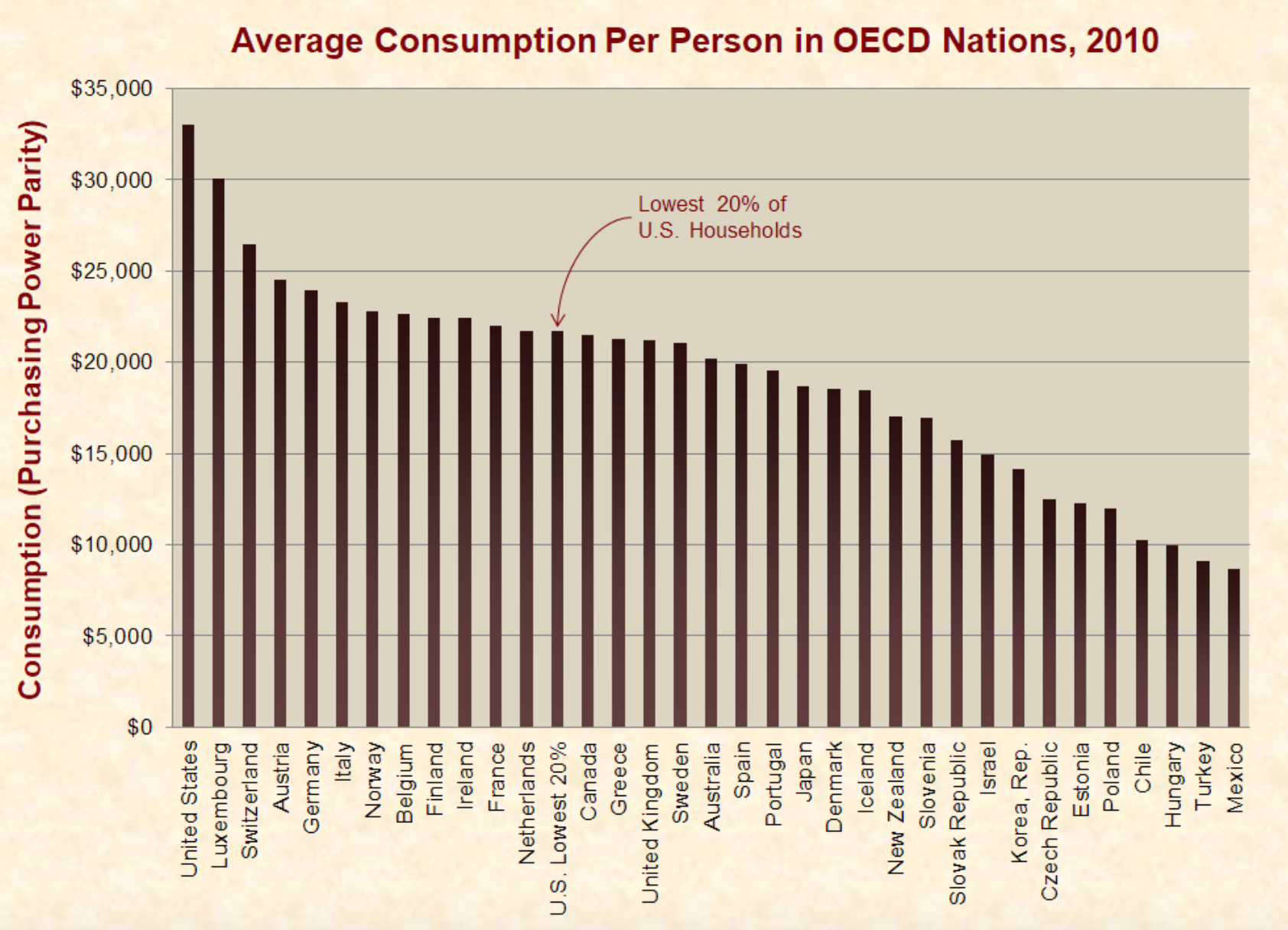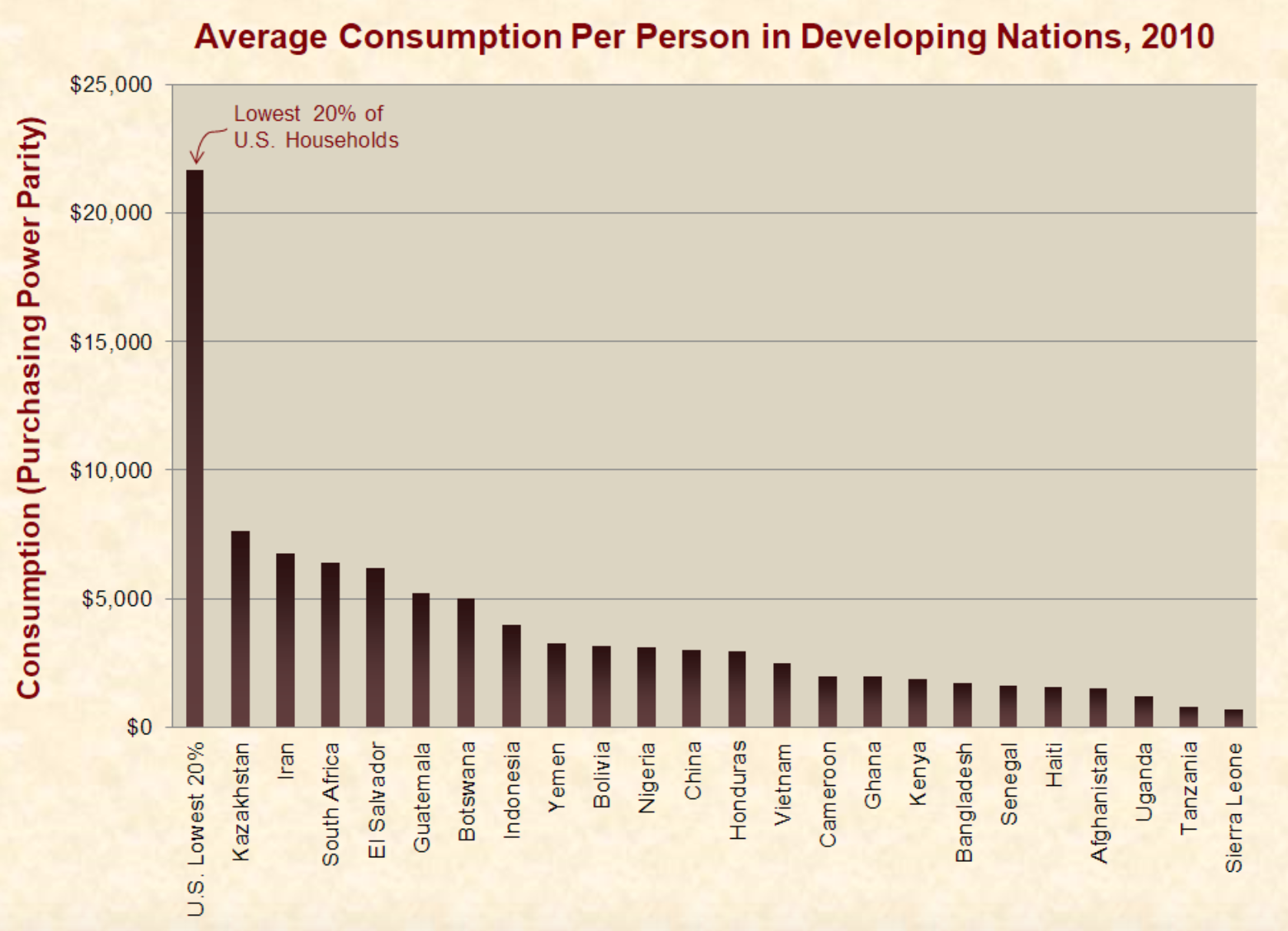If the poorest 20 percent of Americans were their own nation, they would be considered one of the richest nations in the world, finds a new economic analysis from Just Facts, a nonprofit research organization. America’s poorest people also spend more per year than does the average resident in the rest of the world’s developed nations.
“The fact remains that the privilege of living in the U.S. affords poor people with more material resources than the averages for most of the world’s richest nations,” said analysis author James Agresti, the president of Just Facts.
The analysis revealed the flawed data points mainstream news outlets use to push more U.S. welfare programs and outright socialism, even though the United States already has the world’s second-largest welfare state. For example, the Organisation for Economic Co-Operation and Development claims the U.S. poverty rate is 17.8 percent, while Mexico’s poverty rate is 16.6 percent. That gives a completely distorted picture of reality.
The Just Facts analysis points out that OECD studies only account for the income people earn themselves to generate its reported global poverty rates. Yet OECD does not take into account the plethora of non-cash government benefits and charity that assist poor people in the United States.
Some of the things that the OECD and other organizations leave out of their calculations of poverty levels in the United States include:
- Health care provided by Medicaid
- Free clinics
- Children’s Health Insurance Programs (CHIP)
- Food stamps
- School lunches and breakfasts
- Soup kitchens
- Food pantries
- Programs for women, infants, and children
- Housing and amenities provided through rent subsidies
- Utility assistance
- Homeless shelters
Due to the huge number and outlays of American welfare programs, the poorest 20 percent of Americans actually spend more money than do the average person in most OECD and European nations.

The Just Facts analysis notes that their relatively high spending does not necessarily confer a quality of life among America’s poor that is necessarily better than that of people living in Canada, Greece, or the United Kingdom, for example.
That’s because “people’s quality of life also depends on their communities and personal choices, like the local politicians they elect, the violent crimes they commit, and the spending decisions they make,” the analysis notes. For example, “U.S. households receiving Food Stamps spend about 50% more on sweetened drinks, desserts and candy than on fruits & vegetables,” while higher-earning U.S. households spend more on fruit and vegetables. These spending patterns have obvious implications for health differences among the two groups.
As corporate media and Democratic politicians push narratives about America’s supposedly lacking social welfare programs and “growing income inequality,” they completely ignore the facts that the greatest income inequality is not between America’s rich and poor, but between Americans as a whole and the rest of the world. As the graph below clearly demonstrates, America’s poor are the world’s rich.










